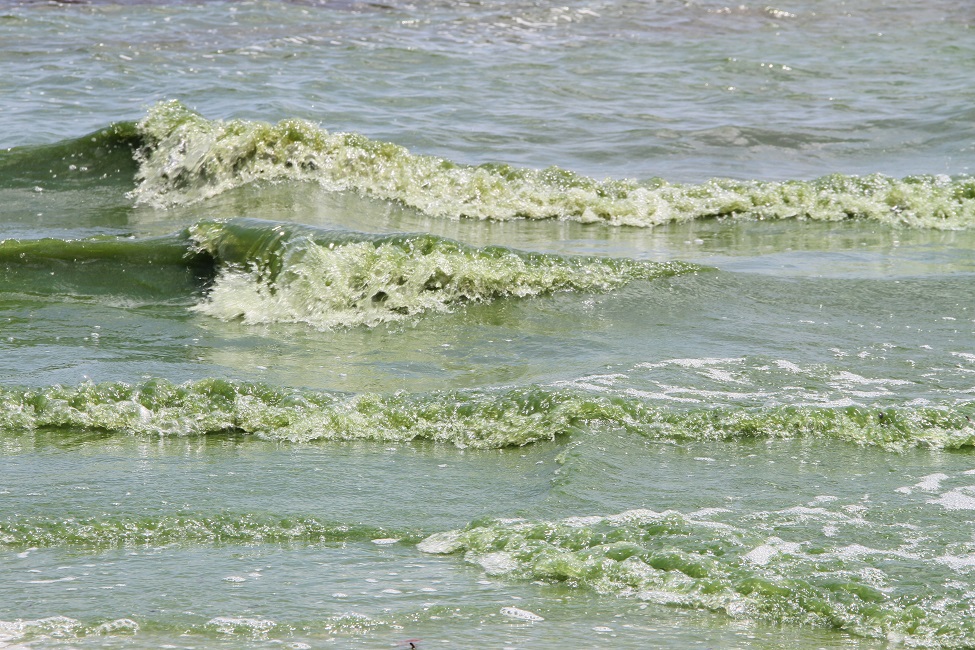FAU Receives Grant to Study Health Effects of Harmful Algal Blooms

During harmful algal blooms, species of cyanobacteria release toxic peptides, including microcystins and nodularin into waterways.
Florida has experienced numerous harmful algal blooms (HABs) in recent years. During these blooms, species of cyanobacteria release toxic peptides, including microcystins and nodularin into waterways. Human exposure comes from ingestion, direct skin contact or inhalation, and can lead to a variety of symptoms ranging from gastroenteritis, nausea, allergic reactions and skin rashes to hepatic injury in more severe cases. Despite multiple occurrences of red tide and blue green algae in Florida waters, the understanding of the health effects of exposure to these blooms remains limited.
Researchers from Florida Atlantic University’s Christine E. Lynn College of Nursing and Harbor Branch Oceanographic Institute have received a $319,976 grant from the Florida Department of Health (FDOH) to evaluate the short- and long-term health effects of exposure to HABS in Florida. Researchers will use a collaborative, multisite approach in collaboration with Florida Gulf Coast University.
Measuring concentrations of HAB toxins in the environment and in multiple human tissues will fill an important data gap in understanding the effects of exposures to HABS, particularly airborne toxins. The research project expands upon pilot studies conducted by FAU in 2018, and an FDOH study funded this past year.
For the study, participants will be recruited from three sites: the greater Fort Myers region (Cape Coral), Clewiston and Stuart in order to capture key areas of human exposure and a wide demographic population profile. Researchers will recruit and re-study the 110 participants sampled during the non-bloom period and recruit and study an additional 50 participants during non-bloom and bloom periods in 2021.
Researchers will conduct environmental water sampling for microcystins and brevetoxins as well as individual and area aerosol sampling for HABs toxins to determine potential health impacts of exposure to these toxins. They also will develop a bio-repository and participant registry for samples obtained during population assessments to establish an ongoing infrastructure to support future long-term studies on the health effects of exposure to HABs.
In addition, researchers will evaluate the potential effect of exposure to SARS-CoV-2 virus, the causative agent of COVID-19, on susceptibility to HABs and health outcomes that are being evaluated in this study population.
“A science-based understanding of the risks associated with exposure to harmful algal blooms can assist regulators in making health-protective decisions and guiding mitigation efforts to reduce the occurrence and distribution of the blooms,” said Shirley Gordon, Ph.D., principal investigator and a professor in FAU’s Christine E. Lynn College of Nursing. “In addition, this study provides a preliminary exploration of a potential increased toxin susceptibility in individuals who have been infected with the COVID-19 virus, which may constitute a new, sensitive subset of the population.”
Participants will be asked to complete a health questionnaire that records the site, frequency and types of potential HABs exposures. Other questions will include a medical history and self-reported symptoms to evaluate associations with exposure and potential dose. Participants also will be asked to provide a blood sample, urine sample and a nasal swab. Blood will be used to assess liver function, and urine and nasal swabs will be used to screen for microcystins and brevetoxins.
FAU is collaborating with the United States Centers for Disease Control and Prevention to develop laboratory testing methods for blood. Water and air samples will be obtained to measure HABs toxin concentrations at the sites of exposure to blue-green algae (all sites) and red tides (Cape Coral).
-FAU-
Tags: harbor branch | research | faculty and staff | nursing | coronavirus